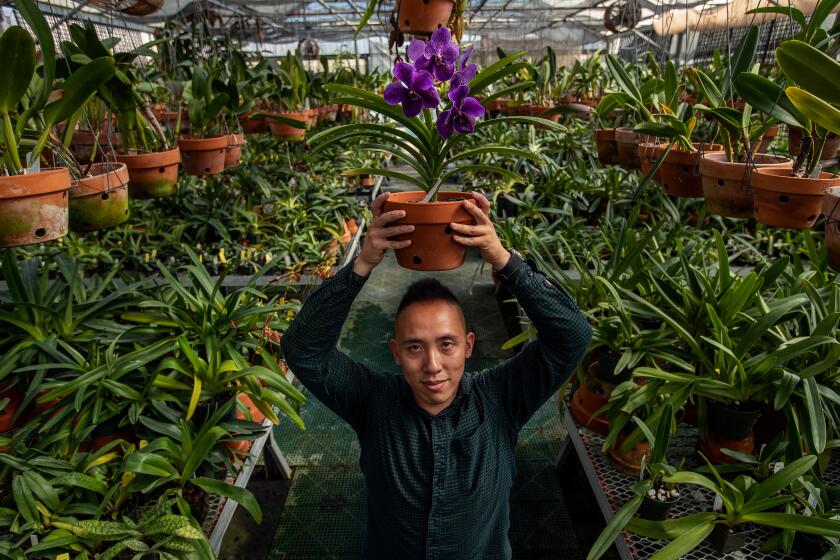A rare corpse flower is set to stink up the Huntington with the smell of dead rats đ¤˘đ
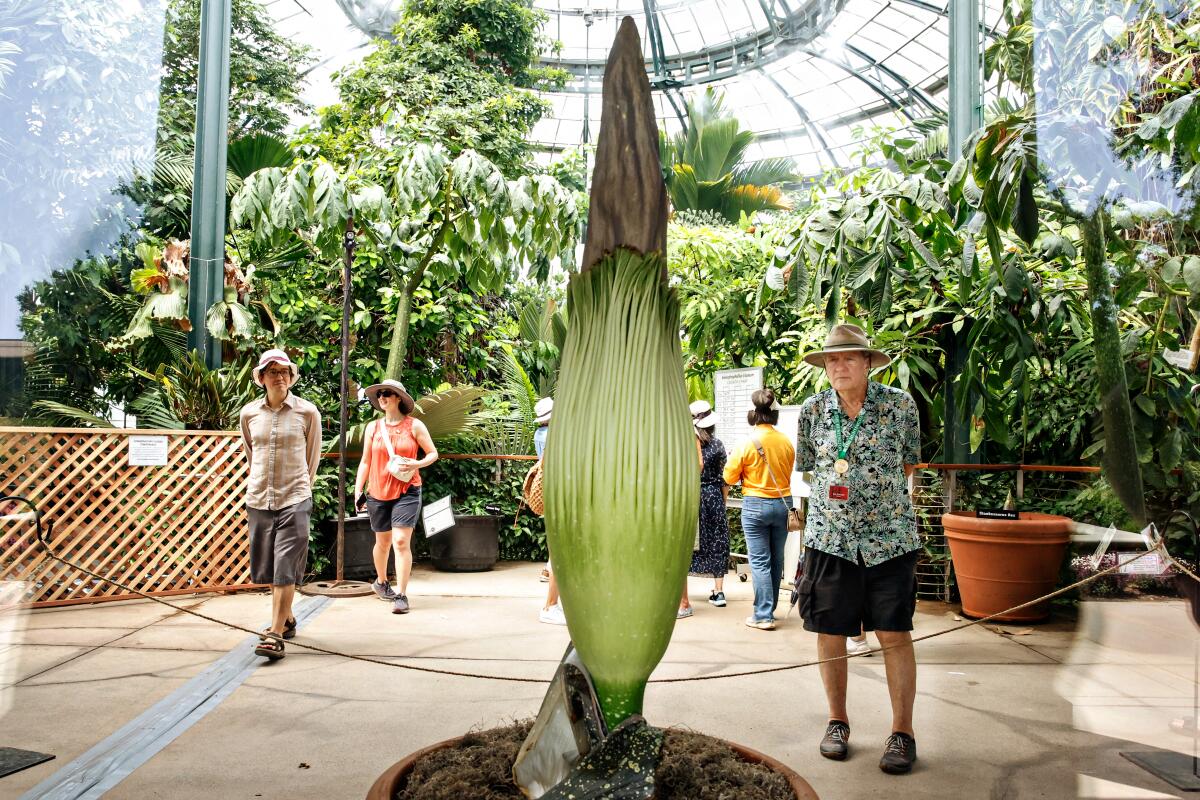
Itâs about to reek at the Huntington.
Think: gym socks, rotten eggs, dead rats trapped in the air vents, stinky.
Another rare corpse flower is set to bloom any day now at the Huntington Library, Art Museum and Botanical Gardens, unleashing its notoriously pungent odor into the conservatory. For many plant lovers, heading to San Marino to catch a whiff of the latest Amorphophallus titanum has become a summer tradition. But this year, the phenomenon will be a bit different.
When the tropical flower â nicknamed Allan the Amorphophallus â unfurls, it will mark the second-latest start to the season at the Huntington. In past years, like clockwork, the towering flowers have first blossomed in June and July, said Brandon Tam, associate curator of the Huntingtonâs orchid collection.
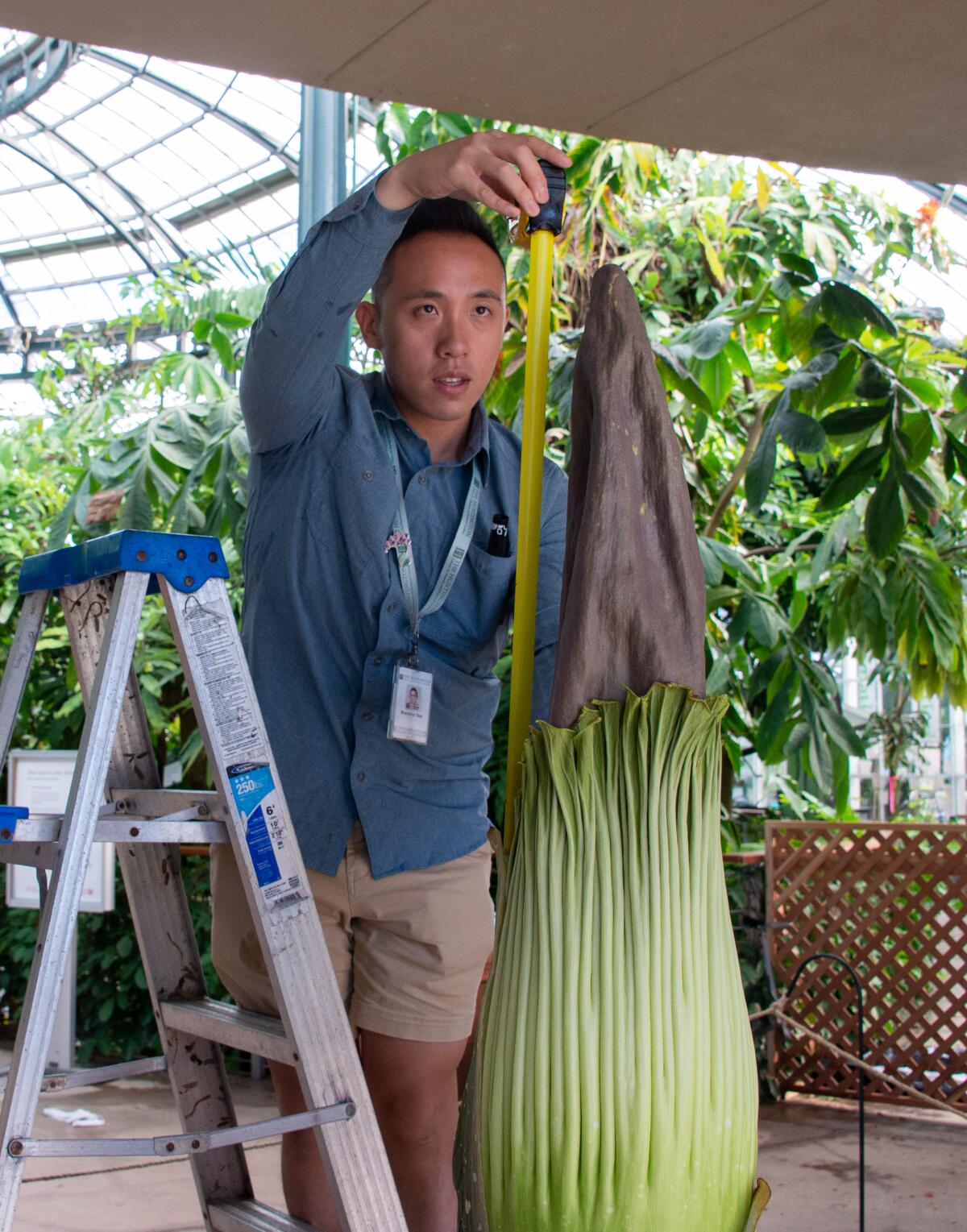
This one is teetering closer to a September bloom, which has happened only one other time, in 2020. Staff hopes it will bloom this weekend. Those hoping to catch the bloom, or perhaps to watch it bloom without the stink, can check out a livestream tracking the plantâs growth.
Since 1999, the Huntington has hosted 21 corpse flower blooms. The putrid flowers â native to the rain forests of Sumatra, Indonesia â can reach more than 8 feet tall, climbing up to 6 inches each day. They stink while they bloom, which lasts for about one to three days.
The flower grabbing all of the attention this year is 21 years old and has reached the maturity needed to bloom. The Huntington has 43 such plants, some of which have bloomed while others have yet to.
Tam remembers the first time he smelled one. It was a June bloom in 2009. At the time, he was 14 years old and a volunteer at the Huntington gardens.
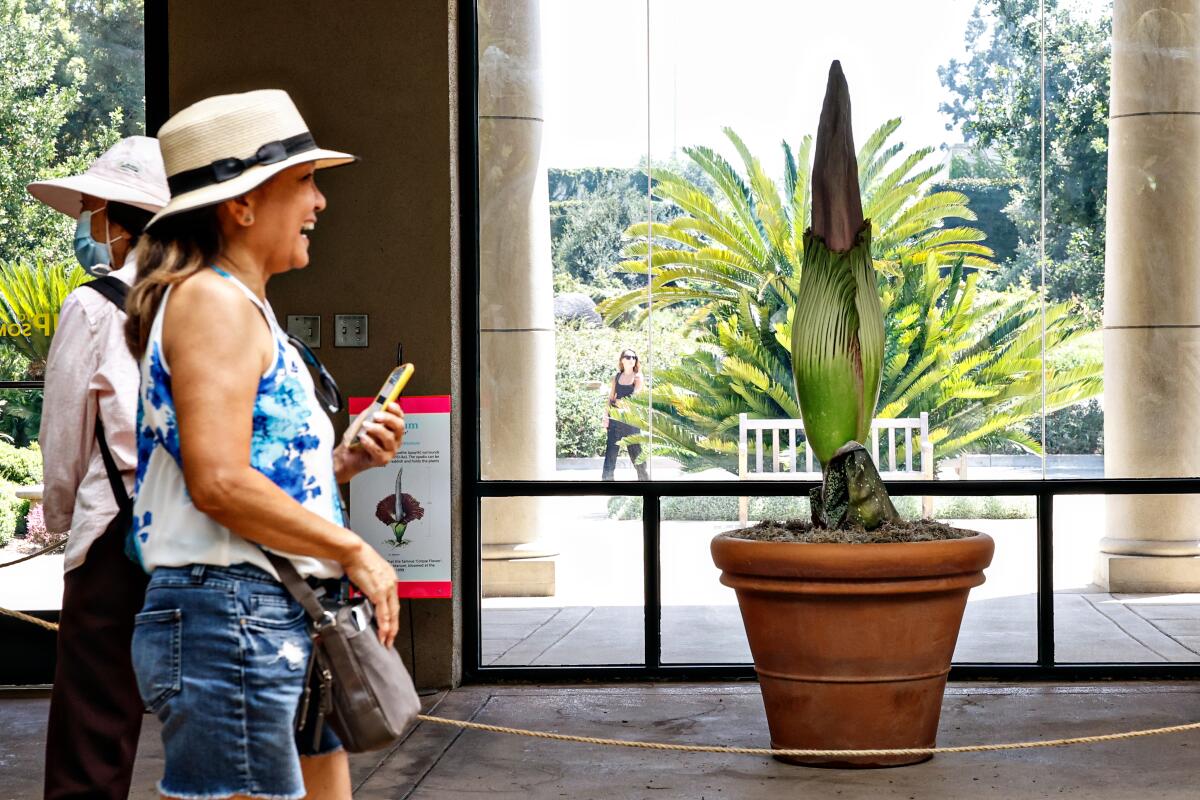
âI mean, this was something out of a sci-fi novel,â he said, reminiscing.
Tam was taken aback by the unique shape of the plant â âlike a Napa cabbage with a giant baguette coming out of the centerâ â and, of course, the smell.
Even 14 years later, âyou never get used to the smell,â said Tam, who has witnessed more than 10 blooms now. âIt almost lingers when you go home, staying with you for at least a few good hours before you can get it out of your head.â
Corpse flowers produce a stench that mimics rotting animals, attracting pollinators such as carrion flies and beetles, which usually lay eggs on animal carcasses. The smell has inspired a tradition of odorous nicknames for each bloom, like 2021âs âStankosaurus Rex.â
When âAllanâ unleashes its stench, it will be a bittersweet bloom for Tam, who said he is concerned by the uncharacteristically late start to the season.
The plant was already off schedule because of the number of gloomy weather days this year, Tam said. He had to push his predicted date for the bloom even later because Hurricane Hilary lowered temperatures for the plant â which thrives in a warm, humid climate.
Associate curator Brandon Tam keeps watch over at least 10,000 orchids with 1,500 unique species inside the Huntingtonâs dedicated greenhouses.
Tam said heâs concerned with how the changing climate will disrupt life cycles as plants âtry to evolve and adapt quickly.â And yet the flower stands as a symbol of hope.
Although still endangered â there are fewer than 1,000 in the wild â the corpse flower is a âconservation success story,â Tam said.
When the Huntington first exhibited an Amorphophallus titanum in 1999, it was the first to bloom in California â and only the 11th recorded bloom in the United States. Curiosity was high for the pungent plant, which grew a reputation for being the worldâs largest flower (although thatâs not entirely true â the corpse flower is actually the largest unbranched inflorescence).
Now, Tam said, he has âlost trackâ of the amount of seedlings the Huntington has shared with botanical gardens across the nation.
âThrough our efforts of conservation and producing so many different seedlings, our chances of seeing this plant has increased dramatically throughout the United States, and of course here at the Huntington,â he said.
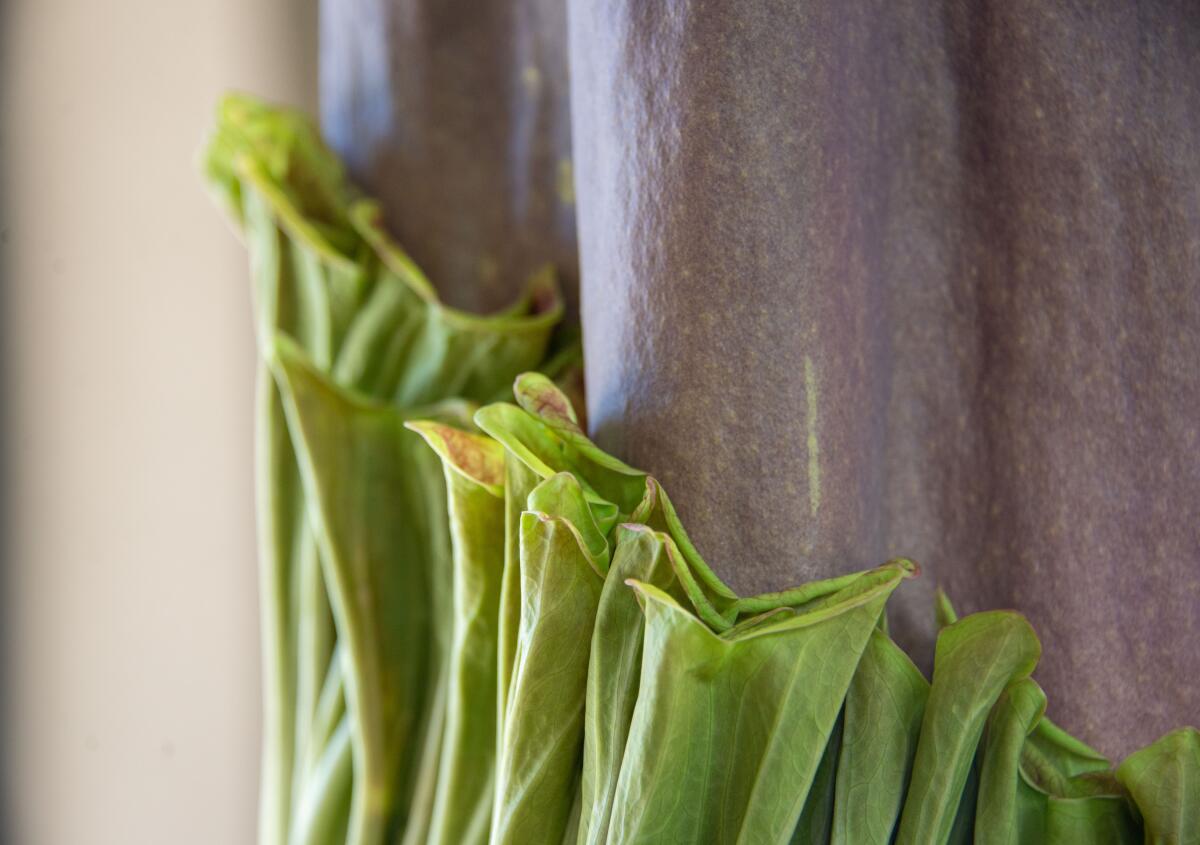
In July, corpse flowers bloomed at San Franciscoâs Conservatory of Flowers and at the San Diego Botanic Gardens. Tam said he hopes the allure of the plant will inspire visitors to pay more attention to other plants that also have dwindling populations.
âThis is just one plant that had a success story, while there are many other plants in the world that are just not as sexy or interesting or weird,â he said. âWe hope this is a gateway to pulling people in.â
How to visit Allan the Amorphophallus titanum
Hours:
Visitors can see the flower during public hours (10 a.m. to 5 p.m., closed Tuesdays) in the Huntingtonâs conservatory. Because of a potentially invasive terrestrial snail, only the front of the conservatory, where the flower is located, is open. Reservations are not required to visit weekdays but are highly encouraged. Reservations are required for weekends, free days and Monday holidays.
Admission: $13 to $29; children 3 and younger, free.
Info: huntington.org
More to Read
Sign up for Essential California
The most important California stories and recommendations in your inbox every morning.
You may occasionally receive promotional content from the Los Angeles Times.

